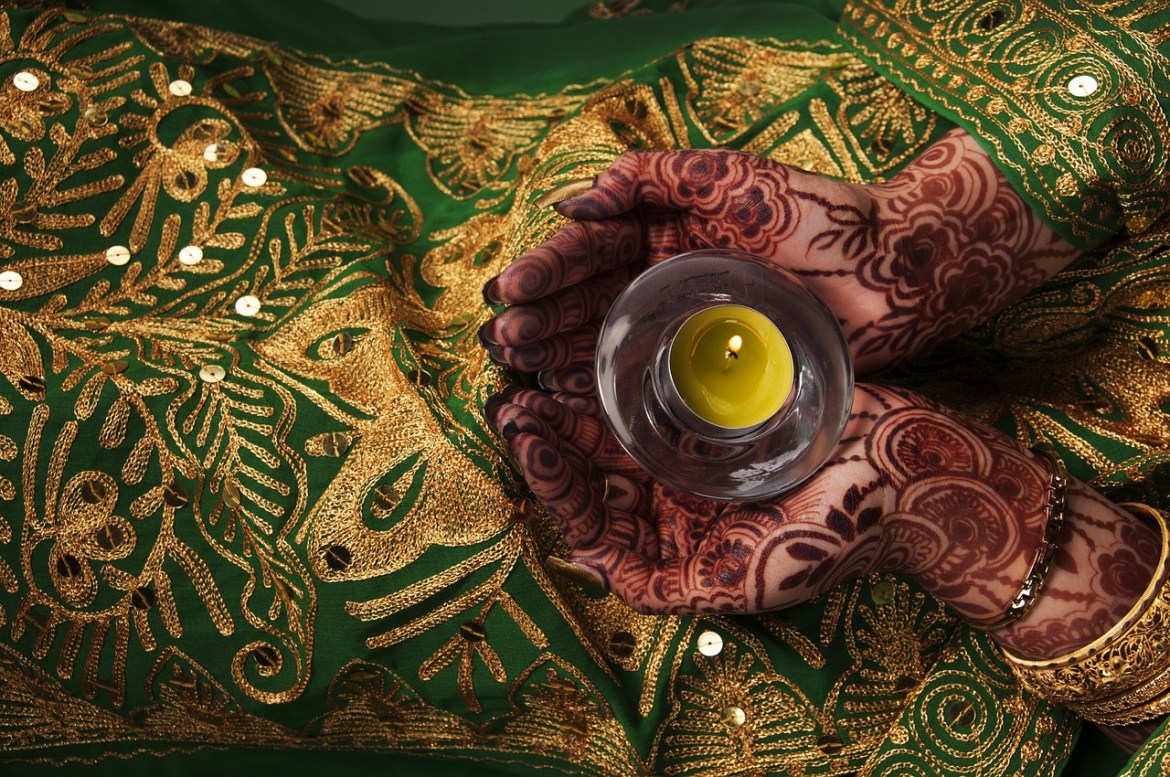If you are an Indian girl, I am pretty sure you must have heard of the term ‘solah shringar’ quite often, either in movies, songs, through your mother, grandma, friends or just randomly. But how many of you know what ‘solah shringar’ is? Well, the literal meaning of ‘Solah Shringar’ is: 16 Bridal makeup or Adornments, where ‘solah’ means 16 and ‘Shringar’ means makeup or adornments. It is believed that Indian Hindu wedding is incomplete without 16 mandatory adornments of bride. These adornments complete her beautification from head to toe. Apart from contributing to enhance the bridal look, there’s a hidden meaning attached with every ornament. Scroll down to know more about ‘Solah Shringar’.
Pre Shringar-Bath: Before the process of solah shringar starts, the bride must take a divine bath from head to toe. It starts with oiling her hair and then washing off with mixed herbs like Aloevera, Shikakai, reetha, amla etc. Then ubtan (organic paste) is applied on brides’ body so that her skin has glowing and long-lasting effect. The ubtan mostly comprises of Turmeric, sandalwood, milk, saffron etc. After taking this divine bath, the 16 steps to Bridal makeup starts.
16 Steps to Bridal Makeup – Solah Shringar:
1. Shaadi ka Joda or The Bridal Dress:
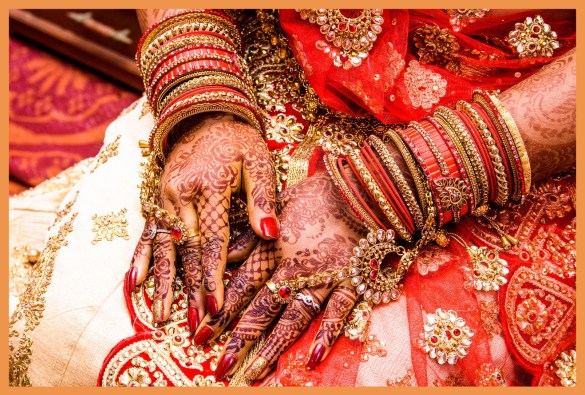
The first step begins with draping a bridal saree or a bridal lehenga which is usually red in color with golden colored thread or embroidery work. Red is considered very auspicious and is very common amongst Indian bridal dress. The traditional dress depends on bride’s heritage and may vary in color or design. It is the most important outfit for bride.
2. Bindi:

Bindi is colored dot that woman wear at the center of her forehead between the eyebrows, again usually red in color, with red and white small dots along the eyebrows.
3. Anjana or kajal:
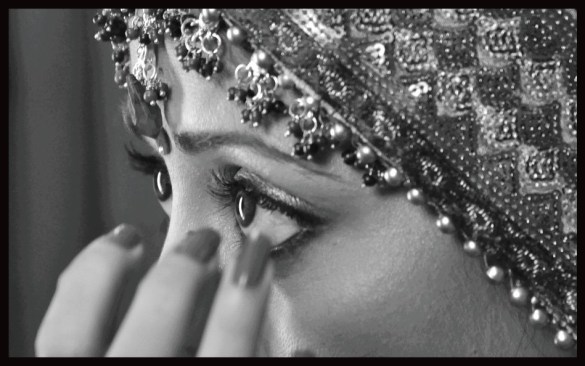
Kohl or Kajal is applied at the edges of both upper and lower eye lids to accentuate the eyes. Kajal makes the bride’s eyes look very attractive. The application of Kajal gives cooling and soothing effects to the eyes.
4. Keshapasharachana or Hair Accessory:
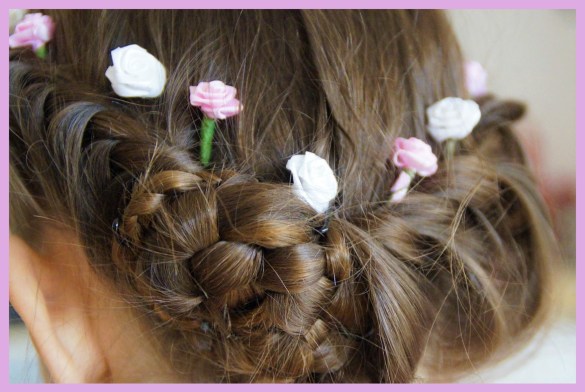
Hairstyle is also an integral part of bridal makeup. It includes adornment of hair with Gajra ( jasmine flower garland ) or just placing jasmine flower according to the hairstyle. Other hair accessories and ornaments are also used to complete the hair style. Jasmine flower is used for its long-lasting fragrance.
5. Maang Tikka:
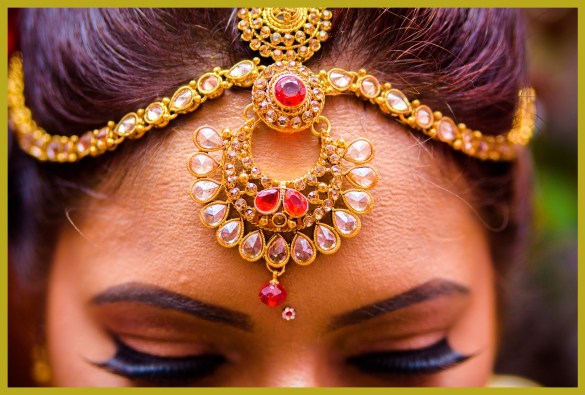
Maang tikka is a hair accessory which is worn at the forehead in the hair parting. It is generally made of gold, silver or precious stones and has chain which is tied along the hairline of the hair.
6. Nath or Nose Ring:
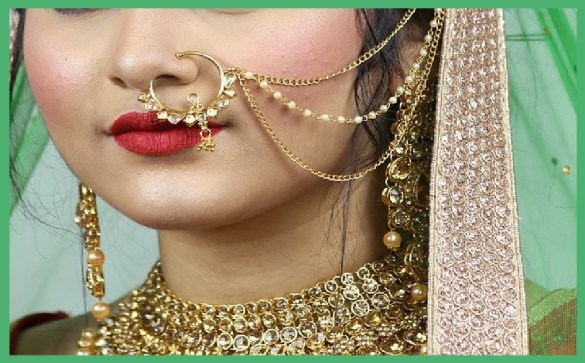
A nose ring is worn around the left nostril by bride. It is generally made of gold or silver with diamonds studded over it and is supported by a chain on one side that goes behind the bride’s left ear.
7. Karn Phool or Ear Ornaments:
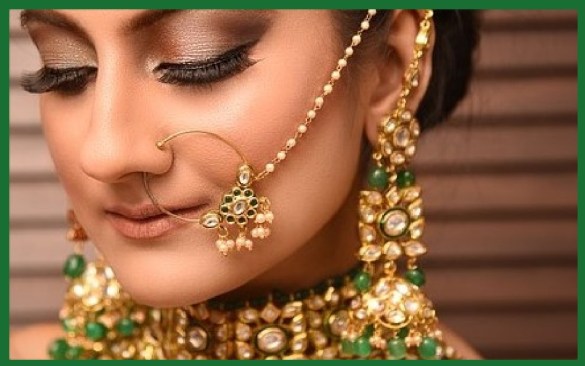
Earrings are the essential part of bridal adornments. They are made of gold, silver with studded diamonds and are mostly complementing the necklace worn. Bridal earrings mostly comprise of heavy jhumkas or danglers supported by a chain that pass on the sides of the ears.
8. Haar, Mangalsutra or Necklace:
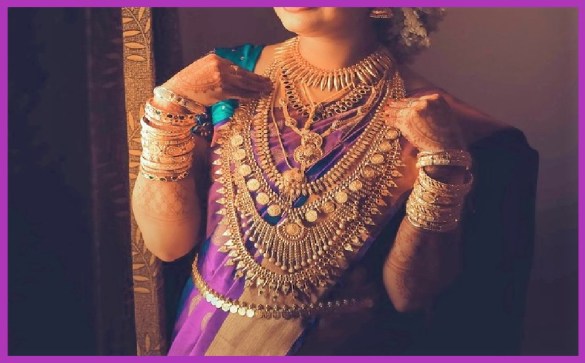
Necklace is the center of attraction of whole bridal look. Necklaces come in different styles like chokers, short or medium length chain or Long necklaces. It is usually made of gold with precious stones like diamonds studded over it and sometimes with kundan or jadau types of embellishments. But the necklace that a groom put around her neck during the marriage ceremony is of prime importance. It is known as Mangalsutra. Mangalsutra is a simple necklace with black beads and embellished with gems, stones or diamonds. It’s the symbol of a married woman.
9. Mehendi or Henna:
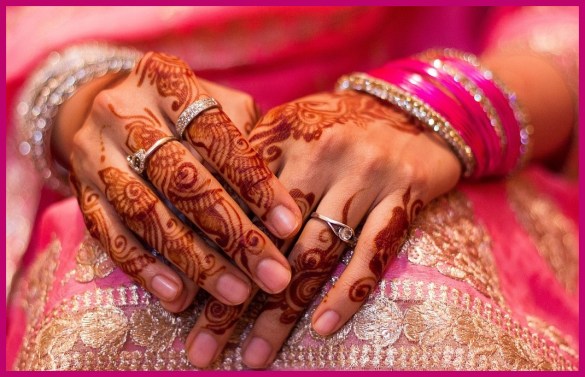
Mehendi is a traditional art of applying a henna paste on brides’ hands and feet, which is to be kept for long hours before removing it. There are many popular mehendi designs available, and according to the tradition, the initials or full name of groom is written on the brides’ hands. The deep red color of mehendi symbolizes lots of Love, luck and prosperity.
10. Choodiyan or Bangles:
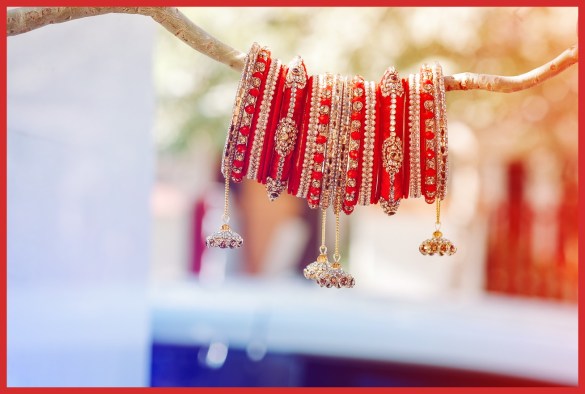
Bangles are traditional, classical and mandatory adornments bride has to wear. They are made of gold, silver, glass, ivory or lac. The color of bangles either depends on the color of bridal outfit or according to the custom of her in laws.
11. Aarsi or Haathful:
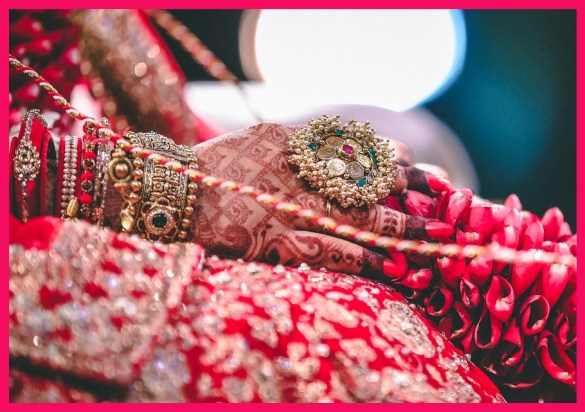
Aarsi is an important ring which has mirror embedded on it to get the glimpse of the groom. That’s because in earlier times brides used to cover their face with veil which gave them no opportunity to see their husband to be. The ring has chain attached which is further connected to the bracelet.
12. Bajubandh or Armband:
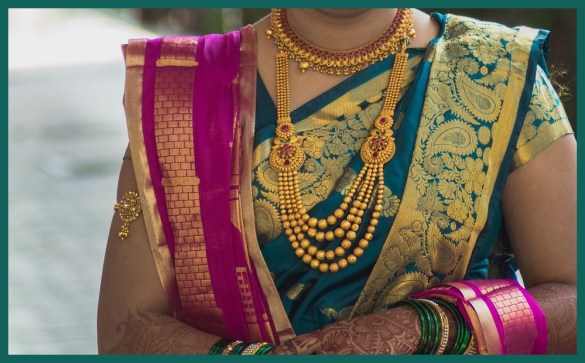
Bajuband is an ornament to be worn on the upper arms either on one side or both the sides. It is generally made of gold, embellished with precious stones.
13. Kamarbandh or Waist Accessories:
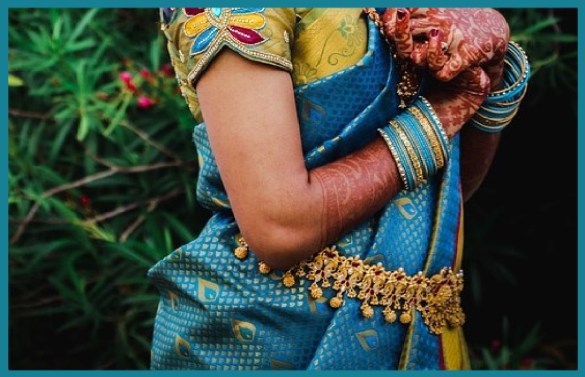
Waistband is a simple ornament that a bride wears around her waist. It enhances her shape and emphasis on her slenderness. It is mostly made of gold.
14. Payals and Bichhua / Anklets and Toe Ring:

Payal is a simple chain or multi layered chain with tiny bells worn around the anklets of both the legs. Bichhua is a toe ring which is to be worn on the second finger of the feet. Both payal and bihhua are made of silver.
15. Itar/ Perfume:
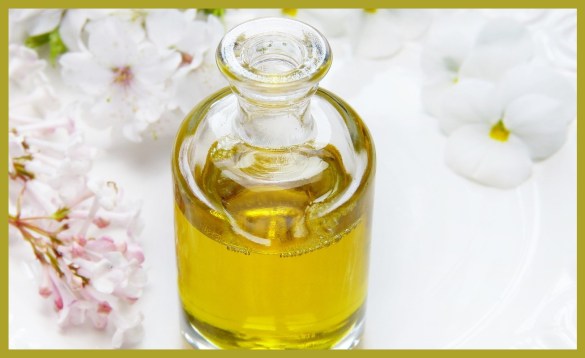
Itar or a perfume is another element of the Solah Shringar that is applied on a bride once she is completely ready so that it makes her smell good and fresh throughout the marriage ceremony.
16. Sindoor or Vermillion:

Sindoor is a red colored powder that has to be applied on the hair parting of bride by her husband during marriage ceremony. It is worn by married woman and denotes the well being of her husband.
Now that you know all the solah shringars, pass on this knowledge to your friends and don’t miss out on any adornments in your wedding.
Also Read: Bridal Face Packs for Glowing Skin

